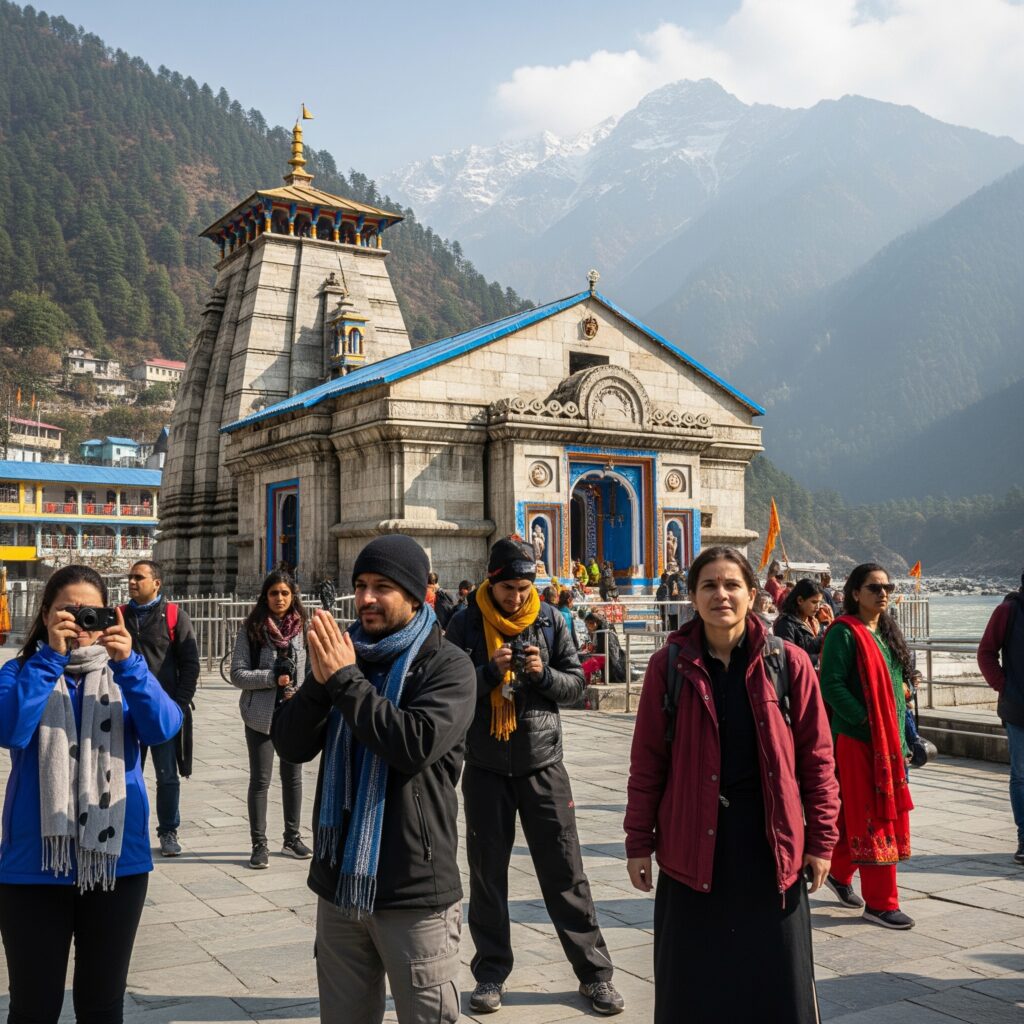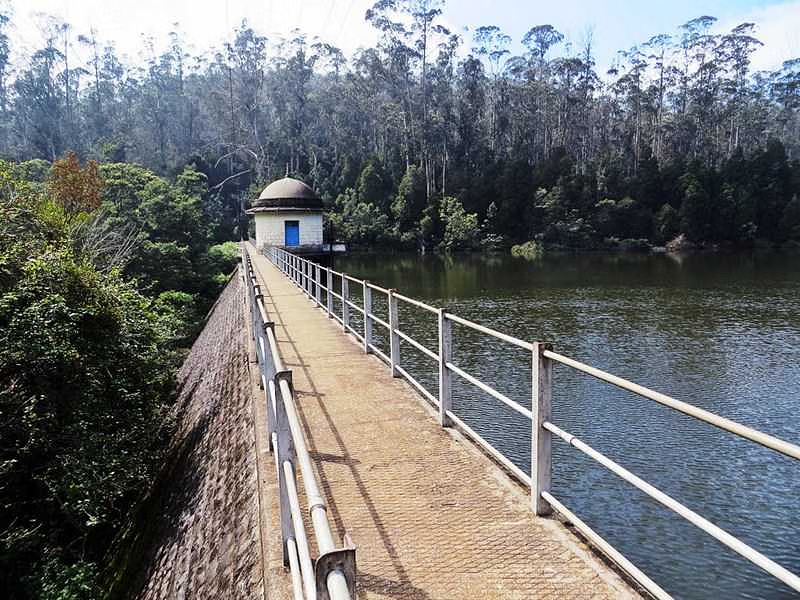Planning a pilgrimage to Kedarnath requires careful preparation, spiritual readiness, and logistical coordination. When learning how to plan kedarnath trip, devotees must consider multiple factors including weather conditions, accommodation, transportation, and physical fitness requirements for this sacred Himalayan journey.
Kedarnath, one of the twelve Jyotirlingas and part of the Char Dham Yatra, sits at an elevation of 3,583 meters in the Garhwal Himalayas. This comprehensive guide addresses how to plan trip to Kedarnath effectively, ensuring a safe, comfortable, and spiritually fulfilling pilgrimage experience.
Table of Contents
Essential Planning Overview
| Planning Aspect | Key Requirements | Best Time | Duration |
| Physical Fitness | Moderate to High | May to October | 3-5 days |
| Weather Preparation | Warm clothes, rain gear | Avoid monsoon | Year-round planning |
| Accommodation | Advance booking required | Peak season booking | 2-3 months ahead |
| Transportation | Multiple mode journey | Helicopter/Trek options | Plan connections |
How Can I Plan a Trip to Kedarnath: Step-by-Step Approach

Understanding how can i plan a trip to kedarnath begins with comprehensive research and systematic preparation. The pilgrimage involves multiple stages of transportation, accommodation arrangements, and physical preparation that require advance planning.
The journey to Kedarnath typically involves reaching Haridwar or Rishikesh by train or flight, followed by road travel to Gaurikund, and finally trekking or helicopter transport to the temple. Each stage requires specific planning considerations and booking arrangements.
How to plan a trip to kedarnath effectively depends on your physical fitness level, available time, budget constraints, and spiritual preferences. Some pilgrims prefer the traditional trekking route for its spiritual significance, while others opt for helicopter services for convenience and time savings.
For travelers from Mumbai, specialized kedarnath tour packages from mumbai provide comprehensive solutions including transportation, accommodation, and guide services. These packages eliminate coordination stress while ensuring all essential arrangements are properly managed.
Best Time to Visit and Seasonal Considerations

Timing your Kedarnath pilgrimage correctly is crucial for a safe and spiritually fulfilling experience. The temple’s high-altitude location at 3,583 meters means it’s accessible only during specific months when weather conditions permit safe travel.
Peak Season Planning (May to June, September to October)
The peak pilgrimage season offers the most favorable weather conditions with clear skies and moderate temperatures. However, this period also brings large crowds, higher accommodation costs, and the need for advance bookings.
Planning Checklist:
- Book accommodations 2-3 months in advance
- Expect temple queues of 2-4 hours during peak times
- Carry warm clothing as temperatures drop to 5°C at night
- Helicopter services operate regularly but book early
- Food costs increase by 30-50% during peak season
Off-Season Considerations (November to April)
The temple remains closed during winter months due to heavy snowfall and extreme weather conditions. Planning visits during closure periods is not possible, making seasonal timing crucial for pilgrimage planning.
Winter Closure Details:
- Temple closes on Kartik Purnima (November)
- Reopens on Akshaya Tritiya (April/May)
- Deity shifted to Ukhimath during winter
- Roads blocked by 10-15 feet of snow
- Use closure period for fitness training and trip preparation
Physical Fitness and Health Preparation
The demanding 16-kilometer trek to Kedarnath requires excellent physical conditioning and health awareness. High-altitude travel poses unique challenges that demand proper preparation to ensure both safety and enjoyment.
Fitness Requirements and Training
The 16-kilometer trek from Gaurikund to Kedarnath requires good physical fitness and endurance. Starting a fitness regimen 2-3 months before the pilgrimage significantly improves the trekking experience and reduces health risks.
Training Schedule:
- Month 1: Daily 30-minute walks, basic cardio exercises
- Month 2: Increase to 45-minute walks, add stair climbing
- Month 3: Long walks with backpack, practice at higher altitudes
- Daily routine: 100 stairs climbing, leg strengthening exercises
- Cardio focus: Running, cycling, swimming for stamina building
Health Precautions and Medical Preparation
High-altitude travel requires specific health considerations and medical preparations. Consulting healthcare providers about altitude sickness prevention and carrying essential medications ensures safer pilgrimage experiences.
Medical Preparation Guide:
- Get health checkup 1 month before travel
- Carry Diamox tablets for altitude sickness prevention
- Pack basic medicines: pain relief, stomach upset, fever
- Bring glucose powder and ORS packets for energy
- Get travel insurance covering high-altitude emergencies
Transportation Planning and Route Options
Reaching Kedarnath involves multiple transportation modes and careful coordination of different travel segments. The journey from major cities to the temple requires strategic planning to ensure smooth connections and minimal delays.
Road Journey from Delhi/Mumbai
The journey typically begins with reaching Haridwar or Rishikesh, followed by road travel through scenic mountain routes to Gaurikund. Understanding transportation options helps plan efficient travel schedules.
Transportation Timeline:
- Day 1: Mumbai to Haridwar by train/flight (12-16 hours)
- Day 2: Haridwar to Guptkashi by road (8-10 hours)
- Day 3: Guptkashi to Gaurikund (1 hour), then trek begins
- Road conditions: Narrow mountain roads, frequent traffic jams
- Rest stops: Plan breaks every 2 hours for safety
Helicopter Services and Alternatives
Helicopter services provide faster, more comfortable transportation for pilgrims with time constraints or physical limitations. Understanding booking procedures and weather dependencies helps plan helicopter travel effectively.
Helicopter Service Details:
- Booking opens: 1 month before travel date
- Cost: ₹1,800-₹2,500 per person one way
- Weight limit: 5 kg luggage + 75 kg body weight
- Weather dependency: 40% cancellation rate during monsoon
- Backup plan: Always prepare for trekking as alternative
Accommodation Planning and Booking Strategy
Securing appropriate accommodation near Kedarnath temple is one of the most challenging aspects of pilgrimage planning. Limited facilities and high demand during peak season require advance booking and flexible backup plans.
Kedarnath Accommodation Options
Accommodation near Kedarnath temple is limited and requires advance booking, especially during peak season. Understanding available options helps secure appropriate lodging for comfortable pilgrimage experiences.
Accommodation Types:
- GMVN Guesthouses: Government-operated, basic facilities
- Dharamshalas: Religious lodging, community accommodations
- Tent Accommodations: Temporary shelters, seasonal availability
- Booking Timeline: 2-3 months advance booking required
- Cost Range: ₹500-₹2,000 per night depending on facilities
Alternative Accommodation Strategies
Planning accommodation in nearby towns like Guptkashi or Phata provides more options and comfortable facilities while maintaining pilgrimage accessibility.
Alternative Locations:
- Guptkashi: 30 km from Gaurikund, better facilities
- Phata: Helicopter services, modern accommodations
- Sitapur: Mid-route location, decent facilities
- Booking advantages: More options, easier reservations
- Travel planning: Day trip options to Kedarnath
Packing Essentials and Gear Requirements

Proper packing for a Himalayan pilgrimage can mean the difference between comfort and suffering during your spiritual journey. The unpredictable mountain weather and limited shopping facilities make careful gear selection crucial.
Essential Packing List
Clothing Items:
- Warm jackets, sweaters, thermal wear
- Waterproof jackets and rain protection
- Comfortable trekking shoes with good grip
- Multiple clothing layers for temperature changes
- Woolen socks, gloves, and caps
Personal and Spiritual Items:
- Prayer books, offerings, and prasad materials
- Personal medications and first aid kit
- Phone chargers, power banks, and cameras
- Cash (limited ATM access in mountains)
- Government ID and booking confirmations
Spiritual Preparation and Significance
Understanding the profound spiritual significance of Kedarnath enhances your pilgrimage experience beyond mere tourism. This sacred site holds deep mythological importance and requires appropriate mental and spiritual preparation.
Religious Importance and Rituals
Kedarnath holds immense spiritual significance as one of the twelve Jyotirlingas and the highest among the Char Dham pilgrimage sites. The temple is believed to be where the Pandavas sought Lord Shiva’s blessings after the Kurukshetra war.
Spiritual Practices:
- Attend early morning and evening aarti ceremonies
- Participate in traditional offerings and prasad distribution
- Follow proper temple etiquette and dress code
- Engage in meditation and prayer practices
- Respect local customs and religious traditions
How to Plan a Trip to Kedarnath and Badrinath
Combined Char Dham Planning
Planning visits to both Kedarnath and Badrinath requires extended time and comprehensive logistics coordination. Understanding the route connections and accommodation options helps create efficient pilgrimage itineraries.
Combined Journey Planning:
- Duration: 8-12 days total journey required
- Route planning: Logical sequence to minimize backtracking
- Accommodation: Multiple location bookings necessary
- Physical demands: Extended trekking requires higher endurance
- Spiritual significance: Complete Char Dham experience
Many pilgrims extend their spiritual journey to include other Uttarakhand destinations. Uttarakhand tour packages from mumbai often combine multiple pilgrimage sites with scenic destinations for comprehensive spiritual and cultural experiences.
7. Safety Measures and Emergency Preparedness
Mountain pilgrimage involves inherent risks that require comprehensive safety planning and emergency preparedness. Understanding potential hazards and having appropriate response strategies ensures confident handling of unexpected situations.
Safety Protocols and Emergency Planning
Safety Essentials:
- Travel in groups for mutual assistance and safety
- Carry emergency contact numbers and medical information
- Monitor weather conditions and follow guide instructions
- Keep family informed about itinerary and expected return
- Carry emergency supplies: flashlight, whistle, emergency food
- Know altitude sickness symptoms and treatment procedures
Emergency Preparedness:
- Research medical facilities along the route
- Carry comprehensive travel insurance
- Keep emergency cash reserves
- Know evacuation procedures and helicopter rescue contacts
- Maintain communication devices with backup power
Budget Planning and Cost Management
Financial planning for a Kedarnath pilgrimage requires understanding various cost components and identifying opportunities for savings. Expenses can vary significantly based on your choices regarding transportation, accommodation, and services.
Comprehensive Cost Analysis
Estimated Costs (Per Person):
- Transportation: ₹5,000-₹12,000 (depends on train/flight choice)
- Accommodation: ₹1,500-₹6,000 (for 3-4 nights)
- Food: ₹1,000-₹3,000 (basic meals to restaurant dining)
- Helicopter: ₹3,600-₹5,000 (round trip if chosen)
- Miscellaneous: ₹2,000-₹4,000 (offerings, emergency expenses)
- Total Budget: ₹15,000-₹30,000 depending on choices
Cost-Saving Strategies
Money-Saving Tips:
- Travel in groups for shared transportation and accommodation costs
- Book early for better rates and availability
- Choose dharamshalas over hotels for budget accommodation
- Carry packed food and snacks to reduce meal expenses
- Use government transportation options where available
Complementary Spiritual Destinations
Extending your pilgrimage to include nearby spiritual sites maximizes the transformative potential of your journey. The Garhwal region offers numerous sacred destinations that complement the Kedarnath experience beautifully.
Nearby Pilgrimage Sites
Additional Spiritual Destinations:
- Badrinath: Second major Char Dham site, 220 km from Kedarnath
- Gangotri: Ganga river origin, significant spiritual importance
- Yamunotri: Yamuna river source, completes Char Dham circuit
- Rishikesh: Yoga capital, perfect for spiritual learning
- Haridwar: Evening Ganga aarti, spiritual cleansing experience
Pilgrims often combine Kedarnath with visits to other spiritual destinations. Rishikesh tour package from mumbai offers yoga and meditation experiences that complement the Kedarnath pilgrimage perfectly.
Hill Station Combinations
Many pilgrims combine spiritual journeys with visits to nearby hill stations for relaxation and rejuvenation. The beautiful hill stations of Uttarakhand offer perfect relaxation after the demanding pilgrimage.
Scenic Destinations:
- Nainital: Lake district with serene natural beauty
- Mussoorie: Queen of hills with colonial charm
- Almora: Cultural heritage and mountain views
- Ranikhet: Peaceful retreat in natural surroundings
The beautiful hill stations provide perfect relaxation after the demanding pilgrimage. Nainital tour package from mumbai provides serene lake experiences that complement the spiritual intensity of Kedarnath.
Documentation and Legal Requirements
Proper documentation and legal compliance are essential for a hassle-free pilgrimage experience. Government regulations, permit requirements, and booking procedures have specific protocols that must be followed.
Required Documents and Permits
Essential Documentation:
- Government-issued photo ID (Aadhaar, passport, driving license)
- Medical certificate for high-altitude travel (if required)
- Travel insurance documentation covering emergency evacuation
- Booking confirmations for accommodation and transportation
- Emergency contact information and family details
- Sufficient cash as ATM facilities are limited in mountain areas
Booking and Registration Procedures
Registration Process:
- Online registration through official government portals
- Advance booking for accommodation and helicopter services
- Group booking procedures for organized tours
- Understanding cancellation policies and terms
- Payment methods and confirmation procedures
Extending Your Spiritual Journey
Many devotees extend their pilgrimage to include other significant spiritual destinations. For those seeking additional spiritual experiences, vaishnodevi tour packages from mumbai offer another powerful pilgrimage opportunity that complements the Kedarnath experience beautifully.
The combination of multiple pilgrimage sites creates a comprehensive spiritual journey that deepens devotional practice and provides diverse religious experiences. Understanding these options helps plan meaningful extended spiritual adventures.
Conclusion
Learning how to plan kedarnath trip requires comprehensive preparation encompassing physical fitness, spiritual readiness, logistical coordination, and cultural sensitivity. The pilgrimage demands respect for both the sacred destination and the challenging mountain environment that houses this ancient temple. Proper planning ensures not only a safe and comfortable journey but also a spiritually transformative experience that honors the profound significance of this sacred site.
Whether you’re planning a solo pilgrimage or how to plan a trip to kedarnath and badrinath as part of the complete Char Dham journey, thorough preparation is essential for a meaningful spiritual experience. You can visit us at VDP Travels, Neighbourhood Complex, F- 5, near SBI Bank, Sector 4, Nerul, Navi Mumbai, Mumbai, Maharashtra 400706. For comprehensive Kedarnath pilgrimage planning and spiritual tour packages, call +91 99675 18405, or visit https://vdp-travels.com/.
How to Plan Kedarnath Trip: FAQs
How to plan kedarnath trip for first-time pilgrims?
Start 2-3 months early with fitness training, book accommodation in advance, choose appropriate season (May-October), and consider guided tour packages for safety.
What is the best time to plan a trip to Kedarnath?
May to October is ideal, with September-October offering pleasant weather and fewer crowds. Temple remains closed November to April due to snow.
How can I plan a trip to Kedarnath on a budget?
Travel in groups, book early for discounts, choose dharamshalas over hotels, carry packed food, and use government transportation options.
What physical fitness is required for Kedarnath trip?
Moderate to high fitness needed for 16 km trek. Start cardio training 2-3 months prior, practice stair climbing, and build leg strength.
How to plan trip to Kedarnath with helicopter service?
Book helicopter tickets online in advance, carry minimal luggage (5 kg limit), check weather updates, and have backup trekking plans.
What documents are needed for Kedarnath pilgrimage?
Government photo ID, medical certificate for high altitude, booking confirmations, travel insurance, and emergency contact information.
How many days needed to plan Kedarnath trip?
Minimum 4-5 days including travel time. Allow extra days for weather delays and rest, especially if combining with other pilgrimage sites.
What should I pack for Kedarnath journey?
Warm clothes, rain gear, comfortable trekking shoes, medicines, torch, power bank, cash, and spiritual items for temple offerings.
How to plan a trip to Kedarnath and Badrinath together?
Allocate 8-12 days, plan logical route sequence, book accommodations at both locations, ensure good physical fitness, and consider guided packages
What safety precautions for Kedarnath pilgrimage?
Monitor weather conditions, travel in groups, carry emergency contacts, inform family about itinerary, and have medical insurance coverage.





